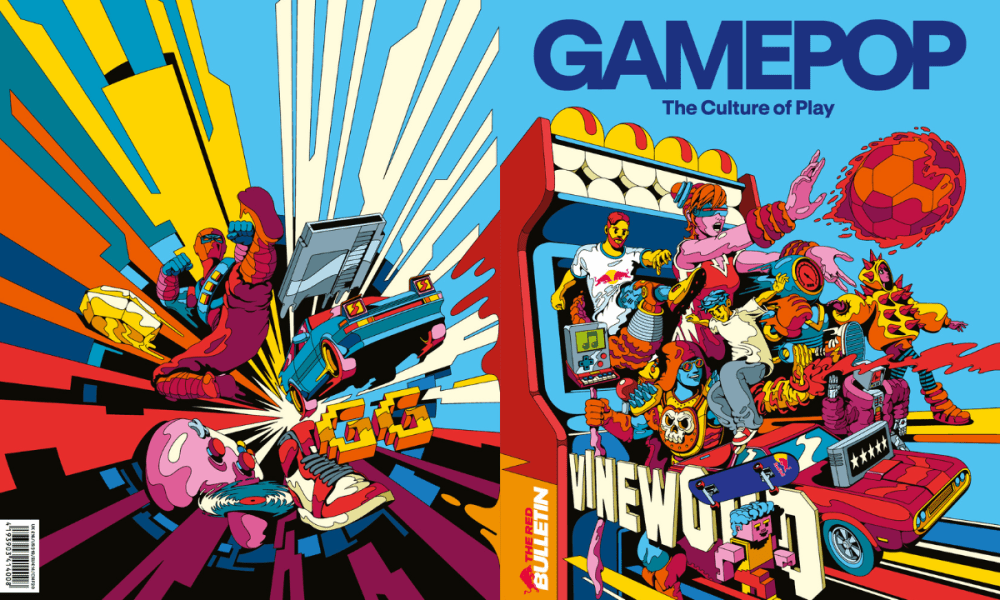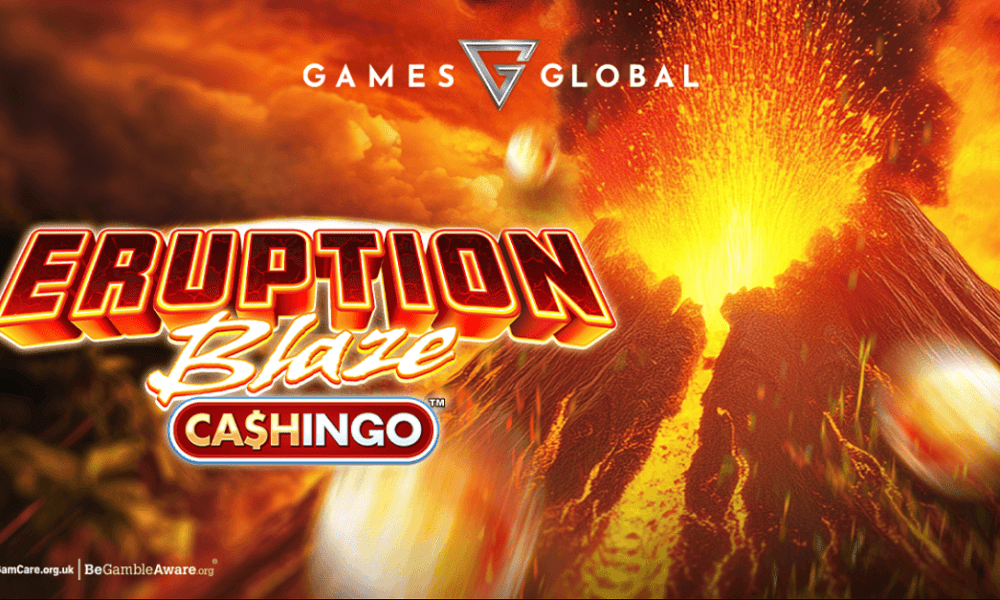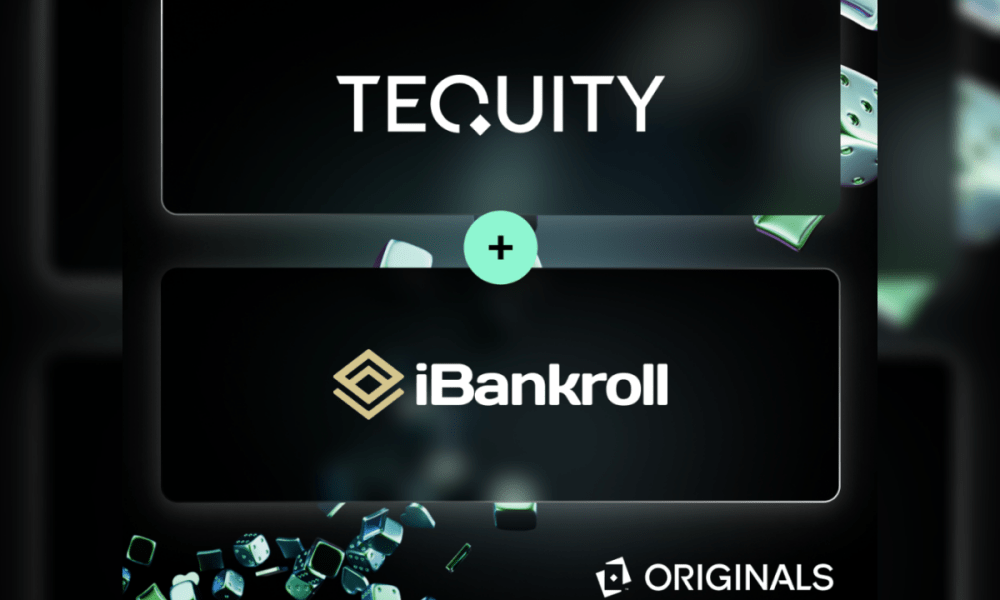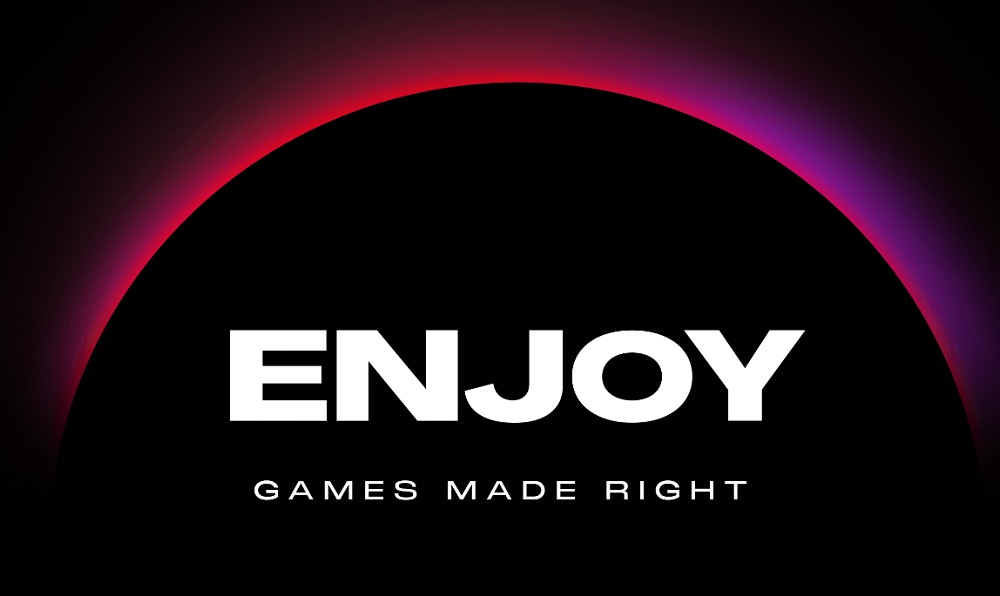Latest News
What Has the Affiliate World Turned Into? The Evolution of iGaming Over the Years
By Dima, Head of Growe Partners
If you’ve been in iGaming affiliate marketing for a while, you will agree with me that things have changed drastically. I’ve been in the industry long enough to remember when conferences felt more like circus shows than business events, traffic quality wasn’t always a priority, and short-term profits were often the main goal. But those days are long gone.
Over the last five to ten years, we’ve seen the industry mature. Flashy gimmicks have been replaced by networking, data-driven decision-making, and long-term partnerships. The game has changed — and so have the rules for success.
From Wild Shows to Professionalism: The Evolution of Industry Events
I remember my first industry events — let’s just say, they were memorable. We’re talking about conferences where organizers brought in wild animals, eccentric performers, and over-the-top entertainment to grab attention. And, honestly, back then, it worked. The industry was still finding its feet, and the focus was more on making noise than making deals.
But if you walk into an iGaming event today, the atmosphere is completely different. The focus has shifted towards high-quality networking, serious business discussions, and insightful panels. Operators, affiliates, and service providers are no longer looking for a spectacle — they want valuable conversations, real partnerships, and data that can help them scale. This shift isn’t just anecdotal; attendance data from major events like iGB Affiliate London and ICE reflects this new industry mindset.
To put the tendencies in the niche perfectly: “The days of pure entertainment are over. Now, events are about meeting the right people, discussing market trends, and sharing insights that actually drive business forward. Everyone wants to learn, not just party.”
This change also reflects growing competition. The industry has matured, and operators expect affiliates to be strategic business partners rather than opportunistic traffic sources. As a result, industry gatherings now prioritize collaboration over spectacle, allowing attendees to gain actionable insights and form meaningful business relationships.
The End of “Quick Wins” and the Rise of Long-Term Partnerships
A decade ago, the affiliate model was simple: drive traffic as fast as possible, cash out, and move on. High churn rates weren’t a problem, and long-term value (LTV) was barely part of the conversation. The goal was short-term profit.
Now, that approach just doesn’t work anymore. Operators have become much more selective. They want affiliates who bring in high-quality players, not just a flood of short-term sign-ups. Retention has become just as important as acquisition, and brands want partners who can deliver sustainable results. Recent trends indicate that operators are increasingly focusing on retention strategies to maintain player engagement and profitability.
Some affiliates have completely overhauled their strategies, moving towards content-driven approaches, CRM integration, and player engagement tactics. Email marketing, push notifications, and tailored offers are now essential tools in the affiliate playbook. The shift to lifetime value-driven metrics means that affiliates must analyze data, optimize player journeys, and work closely with operators to maintain long-term profitability.
Raising the Bar: Quality Traffic Is Now the Standard
It’s not just about partnerships — the standards for traffic quality have skyrocketed. Years ago, some affiliates could get away with gray-hat methods: things like incentivized traffic, bots, or misleading promotions.
Not anymore. Operators are demanding transparency and engagement metrics that actually matter. They want players who deposit, play, and stick around, not just one-time sign-ups.
“We’ve seen a massive shift in traffic evaluation. If your players aren’t engaging, operators will cut you off. There’s no room for low-quality traffic anymore,” commented Mykyta, Head Of Affiliates at Growe Partners. “Everyone is focused on LTV now, and if your traffic isn’t bringing in valuable players, you’re going to struggle to find good deals.”
This heightened scrutiny has led to the decline of black-hat techniques and a greater emphasis on compliance and ethical marketing. Affiliates now invest in data analytics to monitor traffic quality and ensure alignment with operators’ expectations. Some are even forming exclusive partnerships with brands to ensure traffic consistency and build a reputation for delivering high-value players.
The Mobile-First Revolution: Adapting to the New Reality
Ten years ago, desktop traffic dominated. Most players signed up through websites, and mobile gambling was still a niche.
Fast forward to today — mobile is everything. The majority of players now deposit, bet, and interact with brands directly from their phones. Recent studies show that mobile devices account for over 70% of global online gambling revenue, with mobile gambling projected to grow at a CAGR of 11.5% over the next five years.
One thing is clear: if your website, funnels, and marketing strategies aren’t optimized for mobile-first, you’re losing a massive percentage of potential players. Affiliates have had to rethink everything, from ad placements and UX design to the way they track and analyze player behavior across different devices.
AI and Automation: The Affiliate Game-Changer
One of the biggest shifts I’ve seen is how much AI has changed our approach to marketing. Years ago, affiliate marketing was all about manual testing — setting up campaigns, running A/B tests, and figuring things out through trial and error.
Now, AI-driven tools handle campaign optimization, ad targeting, and even content creation. AI can analyze thousands of data points in real-time, adjusting campaigns to find the most profitable audience segments. According to a 2023 report from McKinsey, AI-driven marketing strategies have increased conversion rates by up to 35% for affiliates who integrate them effectively.
“AI isn’t replacing affiliates — it’s giving them the tools to work smarter and make better decisions,” said Anna-Mariia, Affiliate Team Lead at Growe Partners . “Today, AI can generate ad creatives, predict user behavior, and even automate entire campaigns. The affiliates who are leveraging these tools are gaining a huge competitive advantage.”
New Markets, New Opportunities: The Rise of LATAM
One of the biggest industry shifts in recent years has been the explosive growth of Latin America (LATAM). Markets like Argentina, Chile, and Mexico have become prime territories for iGaming, offering huge potential for affiliates who know how to localize their approach. Market data shows that LATAM’s iGaming sector is growing at an annual rate of 20%, outpacing most European markets.
Chile and Argentina, which we are actively working with, have emerged as some of the most promising markets in Latin America. As iGaming adoption continues to rise, these countries present significant opportunities for affiliates who can adapt to local regulatory requirements and cultural preferences. And, of course, affiliates who understand regional payment preferences, player behavior, and localized marketing strategies will have a clear advantage over those applying a one-size-fits-all approach.
What To Expect Next?
Looking back at how the industry has evolved, one thing is clear: affiliate marketing isn’t as easy as it used to be, but it’s more rewarding than ever. The days of quick wins and shady tactics are over. Success now requires long-term thinking, high-quality traffic, and strategic partnerships. Affiliates who embrace AI, mobile-first strategies, and new markets like LATAM will be the ones leading the next decade of growth. The affiliate world has changed, but for those willing to adapt, the opportunities are bigger than ever.
The post What Has the Affiliate World Turned Into? The Evolution of iGaming Over the Years appeared first on European Gaming Industry News.

Latest News
Finland’s Gambling Reform Is Official – What Happens Next?
The wait is over: The Finnish Parliament has officially approved the new gambling legislation. In a decisive plenary session, MPs voted 158 in favor to 9 opposed, with 32 abstaining. The text remained unchanged from the version presented in previous weeks, solidifying the framework for Finland’s transition from a monopoly to a licensed market.
With the political uncertainty resolved, the focus now shifts to implementation. For operators, this means the race to compliance—and market entry—has effectively begun.
The Confirmed Timeline
With the legislation passed, the roadmap to the market opening is now set. Operators must use the coming months to prepare for a rigorous licensing process.
-
Early 2026: The application window is expected to open. The regulator will begin accepting and reviewing license applications.
-
2026 (Throughout): The “preparatory year.” This period is dedicated to vetting applicants, ensuring technical compliance, and establishing the new supervisory authority.
-
January 1, 2027: The regulated Finnish market officially opens. Licensed operators can go live with betting and online casino services.
Entering the Finnish Market with Nordic Legal
Navigating a new jurisdiction is complex, but it doesn’t have to be inefficient. With extensive experience advising on gaming licences across the Nordic markets, Nordic Legal brings a proven, practical approach to the Finnish process.
Efficiency Through Synergy If you already work with us in Denmark or Sweden, we ensure your Finnish licence application isn’t a “start from scratch” project. We build directly on our existing knowledge of your organisation and systems.
Your usual Nordic Legal contact will coordinate directly with our Helsinki team at no extra cost. This integrated approach saves you time and avoids the frustration of duplicating work you’ve already done for other Nordic licenses.
Our Approach We focus on smart compliance:
-
Reusing documentation where regulations overlap.
-
Anticipating regulatory questions before they are asked.
-
Aligning requirements for technical standards and responsible gambling.
-
Engaging constructively with the Finnish authority to ensure a smooth process.
The Finnish Licence Application Package
To support your entry, we offer a comprehensive package designed to handle the heavy lifting:
-
Translation of all required documents.
-
Guidance and completion of complex application forms.
-
Full project management from start to submission.
-
Direct communication with the Finnish regulator on your behalf.
Next Steps
The window for preparation is narrowing. Contact your usual Nordic Legal advisor today to discuss the new legislation or our Licence Application Package. Alternatively, reach out to us directly to secure your place in Finland’s upcoming regulated market.
The post Finland’s Gambling Reform Is Official – What Happens Next? appeared first on Gaming and Gambling Industry Newsroom.
Latest News
GAMEPOP: The Culture of Play by Red Bull Media House – the first bookazine devoted entirely to video game culture
Introducing GAMEPOP: The Culture of Play, a new premium bookazine by Red Bull Media House and the world’s first magazine dedicated entirely to video-game culture. Designed as a rich, book-like publication, GAMEPOP rethinks what a magazine can be, capturing the creativity, personalities and ideas shaping modern gaming. GAMEPOP will debut at the Red Bull Tetris World Final in Dubai from December 11 to 13, followed by The Game Awards on December 11. The issue will then be available through select international retailers in the weeks that follow.
Across 180 pages, the issue brings together a wide range of cultural voices, including Japanese game designer Hideo Kojima, leading DC Comics creators, the Oscar-nominated team behind Grand Theft Hamlet and contributors with bylines in Vogue. The bookazine also spotlights standout Red Bull talent, including YouTube star Ludwig, Twitch creators Emiru and Caedrel, and Red Bull athlete MenaRD.
Rather than treating gaming as a standalone medium, GAMEPOP looks at how games influence, and are influenced by, wider culture. Through original photography, long-form features, illustration and visual essays, the publication explores how gaming connects to global trends in style, music, movement, storytelling and performance, and the creative communities driving that conversation.
The issue also includes interactive elements, including a bespoke Choose Your Own Adventure story created exclusively for the launch. A limited collector edition of 150 copies takes the concept a step further, featuring a fully functioning Tetris® device embedded directly into the cover – an industry first that turns the magazine into an object of play.
The post GAMEPOP: The Culture of Play by Red Bull Media House – the first bookazine devoted entirely to video game culture appeared first on Gaming and Gambling Industry Newsroom.
Latest News
Red Rake Gaming Expands Global Presence Through Partnership with QTech Games
Red Rake Gaming is pleased to announce a partnership with QTech Games, a leading aggregator and platform renowned for its strong presence in emerging markets on a global level. This collaboration brings Red Rake’s diverse and visually engaging portfolio of slots to QTech Games’ extensive aggregation platform, giving players across multiple continents access to high-quality, entertainment-focused casino content.
Founded in 2015, QTech Games is celebrating its 10-year anniversary in 2025. Over the past decade, the company has grown from rapid early-stage expansion to become a dominant force into emerging markets worldwide. With a global presence —including a new tech hub in Spain and offices in Malta—and Latin America, QTech Games has established itself as a fully-fledged international powerhouse.
Players can now enjoy titles from the Million Series, the Super Stars Series, and seasonal slots such as Halloween Wins and Christmas Wins, alongside new adventures including Azteca Gold Collect, Sherlock and the Stolen Gems, Beating Alcatraz, Big Size Fishin’, and Midas Wins.
QTech Games CEO, Philip Doftvik, said: “It’s another notch on our belt to have integrated more premium content from Red Rake. Theirs is a growing and constantly innovating library, delivering impressive support to the depth of our broad igaming-vertical spread.”
Nick Barr, Managing Director for Red Rake Gaming Malta, commented: “We are thrilled to partner with QTech Games and bring our portfolio of games to their growing network. Their leadership in emerging markets and innovative approach to aggregation allow us to reach new players and provide them with high-quality gaming experiences featuring unique features and visually engaging content. This collaboration marks an important step in strengthening our presence in key markets and further establishing Red Rake Gaming’s international presence.”
The post Red Rake Gaming Expands Global Presence Through Partnership with QTech Games appeared first on Gaming and Gambling Industry Newsroom.
-
Latest News3 months ago
Announcement: 25th September 2025
-
Latest News3 months ago
AI-Powered Gamification Arrives on Vegangster Platform via Smartico
-

 Latest News5 days ago
Latest News5 days agoSCCG Announces Strategic Partnership with Yellow Elephant Studios to Expand Multi-Channel Gaming Content Worldwide
-
Latest News1 month ago
JioBLAST Launches All Stars vs India powered by Campa Energy: A New Era of Creator-Driven Esports Entertainment
-
Latest News3 months ago
The Countdown is On: Less Than 3 Months to Go Until The Games of The Future 2025 Kicks Off in Abu Dhabi
-
eSports1 month ago
CS:GO Betting Gains Momentum in the iGaming Sector
-
Latest News2 weeks ago
THE 2025 PUBG MOBILE GLOBAL CHAMPIONSHIP GROUP STAGE WRAPS UP WITH LAST CHANCE IN SIGHT
-
Latest News3 months ago
Leading The Charge! Euronics Group Joins LEC As Official Electronics Retail Partner













You must be logged in to post a comment Login